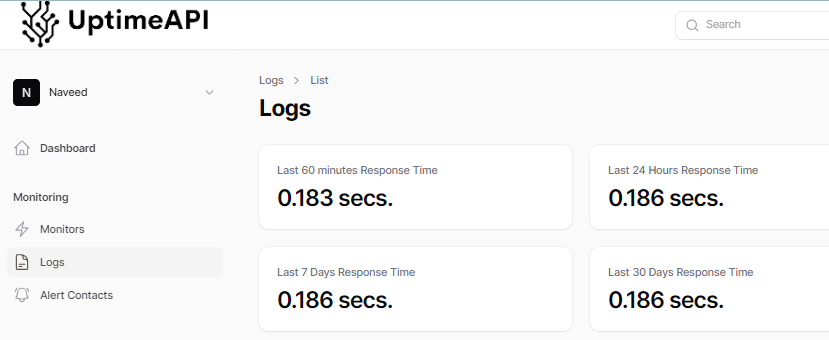Ensuring consistent API uptime is pivotal in today’s digital landscape. As businesses rely heavily on APIs for seamless interactions and data exchange, any downtime can lead to disruptions and impact user experiences. In this blog, we’ll delve into best practices for maintaining robust REST API uptime, focusing on how an innovative API monitoring tool can be a game-changer in achieving and sustaining reliability.
Why REST API Uptime Matters
The availability and performance of REST APIs directly influence the functionality of applications and services. Users expect quick responses and smooth interactions, making uptime a critical aspect of API management.
Challenges In Ensuring Uptime
Several factors pose challenges to maintaining consistent REST API uptime:
- Increased Complexity: As APIs become more intricate, with multiple endpoints and dependencies, monitoring their uptime becomes complex.
- Real-time Visibility: Traditional monitoring tools may not provide real-time insights, causing delays in identifying and resolving issues promptly.
- Scalability Concerns: Ensuring uptime across diverse user bases and scaling API operations can be challenging without the right tools.
Enter UptimeAPI
UptimeAPI stands out as an effective solution for tackling these challenges and optimizing API uptime. Here are key features that make it a go-to choice:
- Real-time Monitoring:
- It offers instant alerts and insights, providing real-time visibility into API performance.
- Developers can customize alerts based on their preferences, preventing unnecessary disruptions.
- Log Preservation for Analysis:
- The tool preserves comprehensive logs, facilitating in-depth analysis of past performance trends.
- Historical data is crucial for identifying patterns, improving performance, and addressing recurring issues.
- Multi-channel Notifications:
- Users receive notifications seamlessly via various channels such as Slack, email, SMS, or webhook, ensuring adaptability.
Best Practices For REST API Uptime
- Regular Monitoring:
- Implement continuous monitoring to detect and address issues promptly.
- Performance Analysis:
- Leverage UptimeAPI’s log preservation for thorough performance analysis.
- Customized Alerts:
- Set up personalized alerts to receive notifications tailored to specific API-related issues.
- Real-time Insights:
- Embrace real-time monitoring to gain immediate insights into API health and performance.
Getting Started With UptimeAPI
Elevating your REST API uptime with UptimeAPI is a straightforward process:
- Sign Up:
- Visit UptimeAPICloud.com and sign up for a 30-day freemium experience.
- Explore Dashboard:
- Navigate to the Monitoring tab and set up monitors for a reliable digital journey.
- Configure Monitors:
- Tailor monitors to your API’s needs by filling in details and setting up alert preferences.
- Real-Time Alerts:
- Experience the power of real-time alerts, keeping you in control of your API’s performance.
Conclusion
The landscape of digital interactions demands unwavering REST API uptime. By adopting best practices and integrating tools like UptimeAPI, businesses not only ensure reliable API performance but also gain a competitive edge. This seamless operation enhances user experiences, fosters customer trust, and positions your digital ecosystem for sustained success. Navigate the realm of uninterrupted API operations with confidence, leveraging the power of UptimeAPI to stay in control of your digital endeavors. Elevate your API game and let reliability be the cornerstone of your digital presence.
For more information visit the blog post: “Best Practices For REST API Uptime: Stay In Control“



